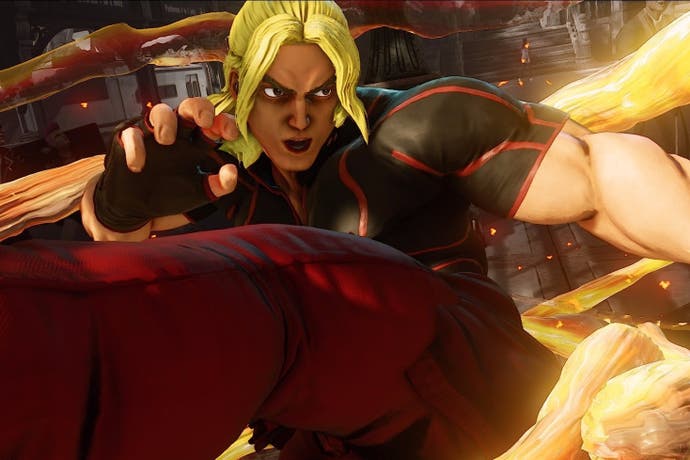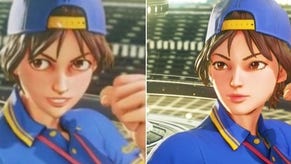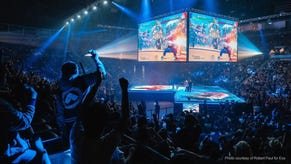Face-Off: Street Fighter 5
Final round... fight!
There's much to enjoy with Capcom's Street Fighter 5 - beautiful, stylised visuals, silky-smooth frame-rates, interesting new characters and a more refined revision of the classic fighting game engine. Users may recall the launch of its predecessor - the sense that the magic had returned to the series, that Capcom had finally figured out how best to evolve Street Fighter into the 3D gaming era. Street Fighter 5 engenders the same kind of feeling as soon as you start to play. Sure, there'll be fully justified complaints about the staggered roll-out of content and an over-reliance on online play, but the core gameplay is simply beautiful.
SF5 also marks the debut of the series on a middleware platform - Epic's Unreal Engine 4. Bearing in mind that UE4 performance on console has been wayward to say the least (Ark: Survival Evolved a particular case in point), it's safe to say that we were concerned that there may have been problems in delivering the series' signature 60fps gameplay - but by and large, this isn't really a problem. From a rendering perspective, SF5 offers up solid performance - though there are some concerns about online play.
In actual fact, the move to Unreal Engine 4 offers up a range of PC bonuses that we would almost certainly have not received had Capcom stuck with its prior strategy of creating its own technology for the game. Street Fighter 5 has four quality presets on PC - low, medium, high and max - and at this point, we're pretty much convinced that the PlayStation 4 version operates using a mixture of medium settings and a smaller amount of customised presets for each major rendering feature.
That might sound as if PS4 owners are getting a less than ideal release, but the reality is that the vast majority of the gameplay is played out using a fairly remote camera. Many of PC's improvements are only really evident on extreme close-ups during intros and outros, barely manifesting at all during the action. It's still a highly attractive game, with only two major features showing any kind of real world advantage on PC - and one of those features is proving rather divisive in the fighting game community.
Earlier in the week, we posted this direct head-to-head gameplay comparison on our YouTube channel. Street Fighter 5's CFN - the Capcom Fighting Network - is fully cross-platform, allowing PS4 owners to battle PC gamers while in-game replays are common between both, allowing us to mirror advanced gameplay between both releases with a degree of per-frame precision we that we can't usually achieve. It's been a highly valuable tool for us, to say the least.
YouTube video compression isn't the greatest, but what's immediately apparent is that the introduction of both camera and object motion blur is a major visual feature that isn't present on PlayStation 4. An out-of-the-box Unreal Engine 4 effect, it's not done justice blended and blurred with YouTube compression - it actually looks remarkably cool in action. However, many fans aren't impressed with the implementation and some are wondering whether blending animation like this may trip up top-end 'play to the frame' players. Well, the good news is that it's by no means mandatory - dropping down post-processing to medium removes the effect completely, with no noticeable hit to image quality elsewhere.
The second major enhancement comes in the form of PC's anti-aliasing solution. Once again, Capcom is delving into the Unreal Engine 4 toolbox here, utilising an excellent form of temporal anti-aliasing that does a great job in dealing with the many jaggies you do see on the PS4 version (again operating at the equivalent of the PC's medium quality preset). The TAA does blend and blur detail a little, but its impact in terms of dealing with aliasing issues is remarkable - and it's a major contributing factor to the sense that the game is simply more refined and polished running on PC.
We could see no real difference between the quality of impact and super-move effects work between platforms and indeed the PC's effects preset itself changes very little - if anything - between any of the PC's four quality levels. However, shadows are more interesting: the closest PC equivalent to the PS4's showing comes at the medium level, but there's more in the way of stippling on the console. On top of that, texture work is also some way off the max quality PC setting - again, medium seems like the closest equivalent but it's clear that some art renders at an even lower resolution.
It's important to stress that while these downgrades are readily observable, it's only really PS4's stippled shadows that distract - and even then, these manifest mostly in the intros and outros with zero impact on gameplay. As things stand, Street Fighter 5's fast-motion and smooth 60fps update tend to see the PC's refinements mostly stand out in freeze-frame screenshots or rare static scenes. Actual gameplay - the stuff that matters - sees very little difference at all outside of the anti-aliasing and the somewhat divisive motion blur (for the record, we love it).
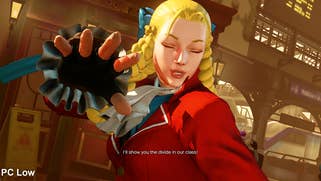
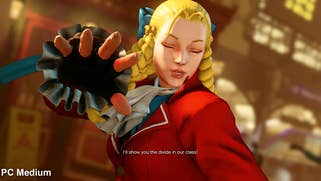
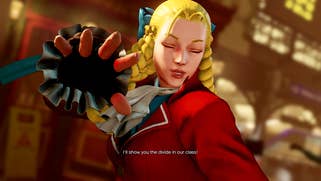
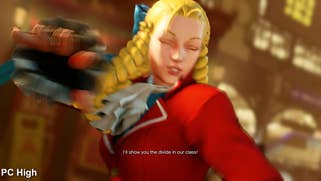
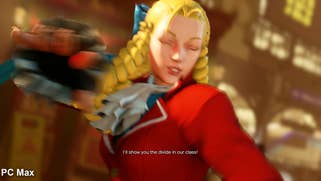
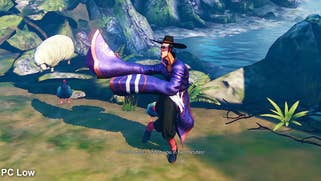



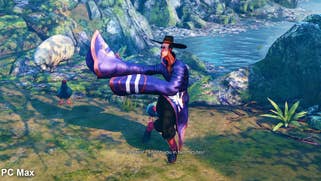



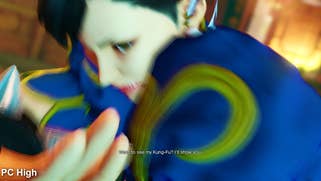
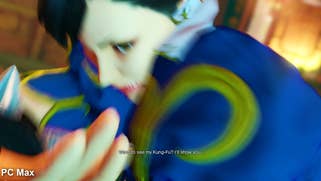
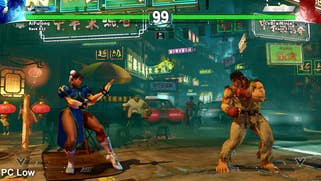
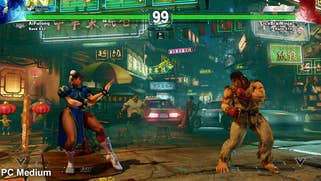
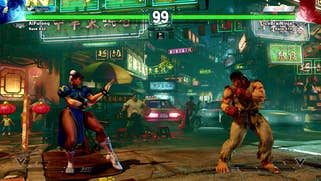

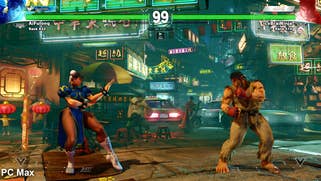

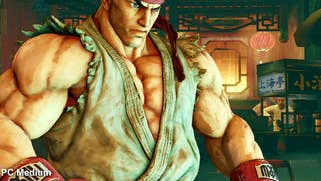
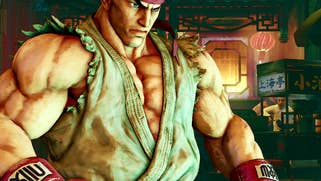


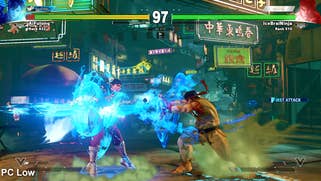
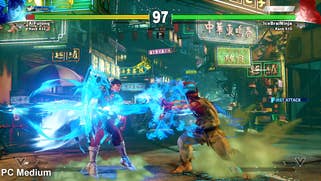
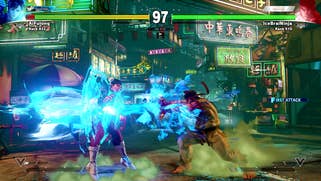
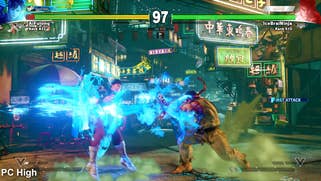
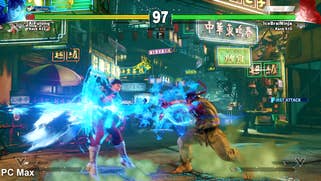

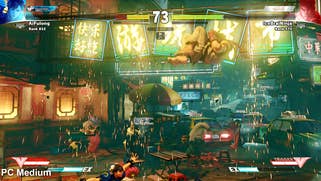


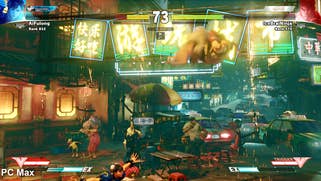
Performance is where we find more in the way of differentiation. We've already covered why you must run Street Fighter 5 at 60fps, and outlined the hardware required to do so (GTX 960 and R9 380 on high settings worked well for us) but since we posted our initial performance analysis, some more factors have come to light that may influence the purchasing decision if you're considering which platform to invest in.
Offline performance is great on PS4, but online can see frame-rate drops appear. In fact, replay footage from Street Fighter 5 compared to the same action captured during actual gameplay highlights a difference - suggesting that the netcode is causing issues for console gamers. Now, the funny thing is that on PC, we don't see these problems. Well, thanks to Charles Roman of Radiant Entertainment, we may well have an explanation.
"I work as a software engineer on Rising Thunder, using GGPO, a rollback based netcode solution similar to what SF5 does (we also use Unreal Engine 4)," he says. "The thing about online performance is that it is dependent on the ping, due to the fact that rollback netcode solutions will take input from a frame that has previously happened (up to some predetermined limit, in our case eight frames) and re-simulate those frames in between. This can possibly be taxing on the CPU as it has to re-simulate multiple frames, in a frame usually dedicated to only one frame in the case of say a replay. If they have not done a good job of optimising this code path, it can cause this difference between online/offline play, and will even be more significant in a higher latency game."
In short, frame-rate hits to the PS4 game may well be dependent on the network conditions between you and the opponent - so good matchmaking really is a must here. But the crucial thing here is that a typical gaming PC is far less likely to have this issue as CPU power tends to be more abundant.
Another issue worthy of investigation concerns another form of latency - input lag. Gamers may well recall the problems seen in Ultra Street Fighter 4 on PlayStation 4, which launched in shoddy shape, its list of sins including noticeably higher input latency. Now, this one is going to be somewhat more difficult to compare in a like-for-like manner: PS4's Dual Shock 4 controllers can be used on PC, but only via third party software - the open source Input Mapper. And if you're going to go wireless, you're at the mercy of the Bluetooth chip - and the accompanying software stack - in your PC.
The obvious solution is to test both connected to the respective systems via a USB cable, where we would hope that the PS4 defers to the wired hook-up as opposed to retaining the Bluetooth connection. Our test methodology here was pretty straightforward. We connected both PC and PS4 to the same HDMI-equipped monitor and we used a high-speed 120fps camera to measure the time taken from a button on the DS4 to be depressed until the resulting action manifested on-screen. The overall time taken is not of concern here (first and foremost, it will be defined by the latency of the display itself) but rather the differential between the two systems when performing identical actions.
Initial results were deeply unimpressive, with the PC actually lagging behind PlayStation 4 by a remarkable 41ms (five frames on our 120fps captures). It seems that Input Mapper's process of taking the Dual Shock 4 inputs and translating them into standard PC Xinput adds a considerable amount of latency. Spotting that something was amiss here, we swapped out the Dual Shock 4 for a standard, USB-wired Xbox 360 controller. In this scenario, the lag differential between PC and PlayStation 4 completely vanished into the margin of error. So in this crucial aspect of the game interface, we are seeing no problems at all on either release - as long as they're both running at the same 60fps frame-rate, of course.
Street Fighter 5 - the Digital Foundry verdict
The PC version of Street Fighter 5 is quantifiably better than its PlayStation 4 equivalent - it does everything the console version does, but you also get the benefits of more refined visuals and more importantly, a slightly smoother experience during online play. Until Capcom can optimise the PS4 netcode, it may well be the case that higher-level players will enjoy better levels of consistency if they opt for the PC release, but online on console is far from a write-off - it's still highly playable and plenty of fun.
As things stand, for the most part, the PS4 build has made its compromises in the right places. Most of the graphical cuts have very little impact on the quality of the overall presentation - and in the case of the missing motion blur, some may well prefer to have that element disabled anyway. The odd (mostly infrequent) reductions in texture quality are a little bizarre for a console kitted out with so much memory, but the chances are that you won't notice the cutbacks and in theory, they should reduce loading times - a particular bugbear on the current generation of consoles.
In closing, it's safe to say that online teething issues aside, we had a great time with both versions of Street Fighter 5. The PS4 version provides the core of the experience - and slight online wobbliness aside - operates at a mostly locked 60fps. Visually, while it may have its compromises, the console version still looks absolutely terrific. The PC release takes that accomplished foundation and builds on it with welcome refinements to the visuals and a decent level of scalability, ensuring it runs on a wide range of PC gaming hardware. However, as good as Street Fighter 5's core gameplay is, we really do have to stress that it is indeed a barebones release - the tech side of things still requires some work, but content is king and this is the biggest issue facing the game right now.
